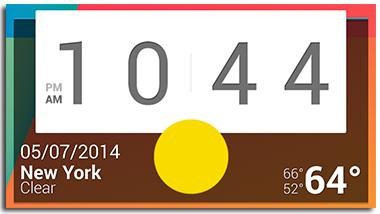The good: The easy-to-use, high-capacity LaCie 2big Thunderbolt Series
offers very fast performance for a dual-bay external hard drive. The
drive supports RAID configurations, has a user-serviceable hard-drive
bay design, and can be daisy-chained with up to five other Thunderbolt
devices without decreasing the throughput.
The bad: The
LaCie 2big Thunderbolt's performance is comparatively slow for a
Thunderbolt storage device, especially in RAID 1. The drive is
relatively expensive; it doesn't have built-in support for any other
common peripheral connections like USB or FireWire; and it doesn't come
with the necessary Thunderbolt cable.
 The bottom line: The
LaCie 2big Thunderbolt Series strikes a balance between capacity,
performance, and price and would be a good choice for owners of
Thunderbolt-enabled computers.
The bottom line: The
LaCie 2big Thunderbolt Series strikes a balance between capacity,
performance, and price and would be a good choice for owners of
Thunderbolt-enabled computers.
The LaCie 2big Thunderbolt Series is like the other hard drives in the 2big family, such as the 2big USB 3.0,
with just one difference: it uses the new Thunderbolt connection and no
other connection types, meaning it forgoes USB, FireWire, and eSATA.
And this is a big difference.
This is the fastest dual-bay
external hard drive I've seen, even though it's noticeably slower than
other Thunderbolt devices, such as the LaCie Little Big Disk SSD and the Promise Pegasus R6.
To make up for not being the fastest, the 2big Thunderbolt Series,
though in no way cheap, costs significantly less than its competitors at
$650 for the 4TB version and $800 for the 6TB. (Like with other
Thunderbolt drives, you'll have to spend another $50 for a Thunderbolt
cable, which is not included.)
That said, the LaCie 2big
Thunderbolt is a good choice if you need a storage product that supports
Thunderbolt and don't want to spend too much on something that's
overkill for your needs.
| Drive type | External Thunderbolt hard drive |
| Connector options | Thunderbolt |
| Available capacities | 4TB, 6TB |
| Product dimensions (LWH) | 3.7x7.9x7.2 inches |
| Weight | 7.9 lbs |
| Capacity of test unit | 6TB |
| OSes supported | Mac OS X 10.6.8 or later. |
| Software included | Intego BackUp Manager Pro |
Design and features
From the front, the LaCie 2big Thunderbolt looks exactly the same as the
2big USB 3.0, with a large blue circle that glows to show that the
device is powered and ready. On the back the drive has two hard-drive
bays that can each hold a 3.5-inch SATA hard drive of up to 3TB, for a
total top capacity of 6TB when the drive is set up in RAID 0. In RAID 1,
this total usable capacity is reduced by half, with the other half
being used as redundancy in case of hard-drive failure.
Each
drive tray is locked in place via a latch that can be opened with a
coin. In case you don't have a coin ready, LaCie also includes a little
plastic key for the job. Once open, the drives can slide out relatively
easily. After that, you'll need a Phillips screwdriver to replace the
hard drive. Note, however, that if you choose to replace the hard drive,
the warranty will be voided. Another note is, while LaCie says the hard
drives are hot-swappable, you should only do that when they are set up
in RAID 1. In RAID 0, which is the default setup, pulling out a hard
drive when the drive is in operation will damage the data.
Also
on the back, you'll find two Thunderbolt ports. This means when used in
a daisy-chain setup, the 2big Thunderbolt can be any part of the chain.
I tried it with a few other Thunderbolt devices, including the Pegasus
R6 and the
Apple Thunderbolt Display, and the chain worked out very well, with no sign of bandwidth reduction.
The
2big Thunderbolt has no power switch, so you can't turn it on and off
while it's plugged in. However, this is no big deal since the drive's
power status works in sync with that of the host computer. You can't
turn it on without first connecting it to a Thunderbolt-enabled
computer. Once plugged in, the drive turns itself off when the computer
is off or in sleep mode, and goes back on when the computer is in
operation. In my trials, the drive remained on when the computer went
into sleep mode, however.
The drive comes with a detachable base
to hold it in a vertical position. It can work on its side as well, but I
see no reason not to use the base.
Out of the box, the 2big
Thunderbolt comes with more than you need in terms of power plugs. The
drive's two-part power adapter comes with enough power heads to fit in
any type of receptacle around the world. Since this is a desktop
external storage device, which would generally be used in one place,
this is likely a waste. It would be much better if you could swap all
the extra power heads for the necessary Thunderbolt cable, which is not
included and costs another $50.
There's nothing to setting up the
LaCie 2big Thunderbolt. Out of the box, it's preformatted in HFS+, and
once connected to a Mac via Thunderbolt, it's immediately available to
the computer, just like other external storage devices. If you want to
use the drive in RAID 1, however, you'll need to run Disk Utility to
change the RAID, which took less than a minute in my trial.
The
drive comes with a CD that contains Intego Backup Manager Pro software.
Since the drive is easy to set up and it's probably best to use it with
your Mac's Time Machine for backing-up purposes, it's likely you won't
need to use this CD at all.










